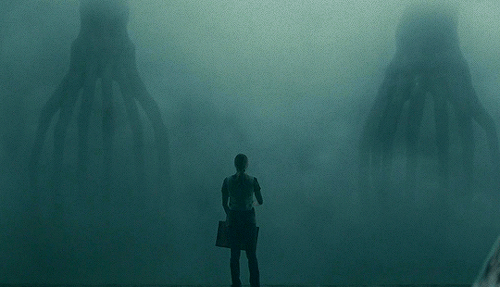The Beef Between STEM And Arts + Humanities Is So Tired. Science And Art Are The Same. Sister Subjects.
the beef between STEM and arts + humanities is so tired. science and art are the same. sister subjects. they’ve fueled one another for years. one cannot exist without the other. they’re both made of the same kind of wonder, one tries to attain long sought after things in reality, and the other impliments the stuff of dreams. logic and emotionality. they’re both exercises of imagination. it’s all just beautiful, academic sludge.
More Posts from Calamansis and Others

warm is the earth where his body once layed
IF YOU NEED TO CALL 911 BUT ARE SCARED TO BECAUSE OF SOMEONE IN THE ROOM
dial and ask for a pepperoni pizza. They will ask if you know you’re calling 911. Say yes, and continue pretending you’re making an order. They’ll ask if there’s someone in the room. You can ask how long it will take for the pizza to get to you, and they will tell you how far away a patrol unit is. Share this to save a life!!! Dispatchers are trained to ask specific yes or no questions..dont hang up!
more on writing muslim characters from a hijabi muslim girl
- hijabis get really excited over pretty scarves - they also like to collect pins and brooches - we get asked a lot of questions and it can be annoying or it can be amusing, just depends on our mood and personality and how the question is phrased - common questions include: - “not even water?” (referring to fasting) - hijabis hear a lot of “do you sleep in that?” (we don’t) and “where is your hair?” (in a bun or a braid, usually) - “is it mooze-slim or mozzlem?” (the answer is neither, it’s muslim, with a soft s and accent on the first syllable) - “ee-slam or iz-lamb?” (it’s iss-laam, accent on the first syllable) - “hee-job?” (heh-jahb, accent on the second syllable)
- “kor-an?” (no. quran. say it like koor-annn, accent on the second syllable) - people tend to mess up our names really badly and you just get a sigh and a resigned nod or an awkward smile, maybe a nickname instead - long hair is easy to hide, short hair is harder to wrap up - hijab isn’t just covering hair, it’s also showing as little skin as possible with the exception of face, hands, and feet, and not wearing tight/sheer clothing - that applies to men too, people just don’t like to mention it ( i wonder why) - henna/mehendi isn’t just for special occasions, you’ll see people wearing it for fun - henna/mehendi isn’t just for muslims, either, it’s not a religious thing - henna/mehendi is not just for women, men also wear it, especially on their weddings - there are big mehendi parties in the couple of nights before eid where people (usually just women and kids) gather and do each other’s mehendi, usually just hands and feet - five daily prayers - most muslim kids can stutter through a couple verses of quran in the original arabic text by the age of seven or eight, it does not matter where they live or where they’re from or what language they speak natively - muslim families tend to have multiple copies of the quran - there are no “versions” of the quran, there has only ever been one. all muslims follow the exact same book - muslims have no concept of taking God’s name in vain, we call on God at every little inconvenience - don’t use islamic phrases if you don’t know what they mean or how to use them. we use them often, inside and outside of religious settings. in islam, it is encouraged to mention God often and we say these things very casually, but we take them very seriously - Allahu Akbar means “God is Greatest” (often said when something shocks or surprises us, or if we’re scared or daunted, or when something amazing happens, whether it be good or bad; it’s like saying “oh my god”) - Subhan Allah means “Glory be to God” (i say subhan Allah at the sky, at babies, at trees, whatever strikes me as pleasant, especially if it’s in nature) - Bismillah means “in the name of God” and it’s just something you say before you start something like eating or doing your homework - In Shaa Allah means “if God wills” (example: you’ll be famous, in shaa Allah) (it’s a reminder that the future is in God’s hands, so be humble and be hopeful)
- Astaghfirullah means “i seek forgiveness from Allah” and it’s like “god forgive me” - Alhamdulillah means “all thanks and praise belong to God” and it’s just a little bit more serious than saying “thank god” (example: i passed my exams, alhamdulillah; i made it home okay, alhamdulillah) - when i say we use them casually, i really mean it - teacher forgot to assign homework? Alhamdulillah - our version of “amen” is “ameen” - muslims greet each other with “assalamu alaikum” which just means “peace be on you” and it’s like saying hi - the proper response is “walaikum assalam” which means “and on you be peace” and it’s like saying “you too”
‘Frankenstein was the doctor’ first of all that little bitch was a college dropout so don’t you ‘doctor’ me






Now this is something I’d watch on tv!
(via)

I can't wait to see dadzawa in 4th season tbh......
IMPORTANT
PLEASE DO NOT SCROLL PAST THIS
PLEASE VOTE YES FOR GAY MARRIAGE IN THE PHILIPPINES!!!
http://www.congress.gov.ph/

Have you read Spin the Dawn by Elizabeth Lim? Idk what Era precisely it's meant to be, but I'm curious if anyone in the Chinese fashion sphere has anything to say about the clothes making/designing portions of the book, re: what clothes making was really like, the job of a royal tailor/tailors in general (were they common, or did most people make their own clothes? Was it a respected job?), that kind of thing! Thank you for your work on this blog!
I don't usually read fantasy novels like Spin the Dawn but I can say a thing or two about clothing production in imperial China. The state of dressmaking was different for each era and I can only talk a little bit about the Ming and Qing. Obviously I don't know the complete details of every stage of production for clothing, I'll just share some things that I do have knowledge on. Most of my information came from Rachel Silberstein's book A Fashionable Century: Textile Artistry and Commerce in the Late Qing, which could be read on JSTOR.
Royal dressmaking
Clothing that was meant for royal use was seldom created by one person alone, but rather the combined efforts of specialists and professionals in different areas. The designs would be made by artists in court, then textiles used for the clothing would be commissioned from state owned textile workshops, then sent to tailors to be sewn into garments and then to embroiderers if embroidery was required. Embroidery wasn't always necessary, since for most of the Ming fashionable and prestigious clothing was made from fabrics with woven patterns (e.g. brocades, damasks) instead of embroidered ones; embroidery would not become the dominant form of decoration until the Ming-Qing transition in the mid 17th century. Normal people wouldn't be able to purchase fabrics from the imperial workshops, but imperial workshops have been on the decline since the late Ming and commercial workshops were producing quality fabrics on a par with those from the imperial ones. Imperial workshop also frequently sublet their work to commercial ones.
As to the design aspect, formal court dress was heavily regulated as to what patterns and garments could be used for what occasion, so there wasn’t much room for artistic liberty. It was on informal clothing that more creativity could be exercised; embroiderers could choose what patterns and motifs go on garments and tailors could experiment with different proportions.

Source
Women’s 吉服 jifu formal ensemble from the Qianlong era. The patterns and their placement for such formal garments were fixed.

Source
Guangxu era informal 氅衣 changyi. The final appearance of this garment was still the combined efforts of many people, e.g. the weavers decided on the purple color, the tailor decided on the proportion and the embroiderers the floral motifs etc..
Home dressmaking
Common people prior to the 17th century mostly made their own clothes, particularly by the female members of the household. It was very common to make clothing from scratch i.e. the growing of cotton or grooming of silkworms, to fabric weaving, sewing and embroidering. It was considered a part of women's education to learn how to weave fabrics and sew garments together, but this doesn't mean that the entire dressmaking process was confined to women or one person either; men, who were expected to do farm work, would grow the crops necessary for the weaving of fabrics, and often assisted in the weaving process. Since the majority of the Chinese population lived in the countryside, many families produced fabrics from raw materials they made on their own farms and made clothes from said fabrics. Because of the difficulty in weaving brocaded fabrics by oneself, home dressmakers who couldn't afford to buy ready woven fabrics prior to the late Ming had to limit themselves to plain fabrics. In the late Ming and early Qing, the rise of embroidery as the dominant method of decoration meant that fashionable patterns became available to less wealthy people who couldn't afford to buy expensive brocaded fabrics, since they could reproduce all the fashionable patterns with just needle, thread and spare time. Embroidery books showing popular patterns and motifs were widely available and could be purchased cheaply. With that said, that doesn't mean that the entirety of a garment had to be made from scratch; many decorations and notions could be bought from shops, like trimmings, ribbons, buttons and prefabricated embroidery appliques. The seamstress would just need to buy the fabric, decorations and notions and put them together as one garment. In the Qing, women seldom went out of the house, and they relied on vendors or middlemen for vendors who brought products to their homes for sale. For women at the time, being a skilled weaver, seamstress or embroiderer was a highly desirable trait, not just because it symbolized "female virtue" whatever that means, but also because it provided work opportunities. Women who were otherwise not employed could take commissions from commercial weaving, tailoring or embroidery workshops as a side income.
Commercial dressmaking
Since the 17th century, the textile industry was increasingly commercialized and it since became more viable to purchase ready woven fabrics from commercial workshops, especially for people in urban areas. These were usually owned by rural families as a side income, and they would often hire landless people to work in their manufactories. I don't know if owning a textile manufactory was a respected job (probably not, considering the literati's hatred for everything commercial) but these people did make serious money. Family operating businesses were often co-owned by wife and husband. Embroidery workshops making prefabricated embroidered appliques and tailor shops making ready to wear garments were also quite common, often relying on middlemen for delivering orders and negotiating prices between the workshop and individual embroiderers/seamstresses in the countryside. In Qing tailor shops, it was often the case that only menswear could be purchased ready to wear, whereas womenswear was made to measure or by the wearer herself. Within tailor shops, there were many subdivisions of labor, like some people did pattern drafting, some people cut pattern pieces and some people assembled the garments. The status of commercial tailors has historically been low, mostly because of the Confucian ruling class’ disdain for consumption, luxury and anything non-self sustaining.

Source
Ca. 1780s export painting showing weaving women.
Feminist tangent
In the Qing, most home weaving and embroidering were done by women, but the commercial workshops were male dominated and their guilds prohibited entry for women, because commercial dressmaking had become a lucrative business and men didn’t want to share employment with women. Male employees in workshops were considered artisans and better paid, whereas women who had to work at home were considered unskilled labor and paid less. Most commercial tailors in the Qing were also male, for reasons similar to why embroidery was male dominated. Whereas women commonly sewed clothes for themselves and their families, they were often prohibited from becoming professional tailors working in workshops or joining a guild. It’s that bogus thing where handicrafts are “women’s work” but when men see how profitable they are they suddenly become “artistic” and limited to men.
Commercial tailors, who were male, were seen as a cultural abomination for doing what was historically seen as “women’s work” for profit. In order to elevate themselves to a higher, more respected status, they chose to throw women under the bus and revise the history of all things historically considered “women’s work” to make them more male centered. An example of this was the 露香园 Luxiang Yuan or Dew Fragrance Garden, a renowned Suzhou embroidery workshop built up by three generations of women of the Gu family, who owned the estate and was the namesake of their style of embroidery, 顾绣 guxiu or Gu embroidery. The male family head at the time, Gu Mingshi, later became the patron saint of the Suzhou embroiderer’s guild founded in 1867. The reason why Gu Mingshi was worshipped instead of the three women who made Gu embroidery famous was largely because male members of the Suzhou embroiderer’s guild needed historical justification for their exclusion of women and erasure of women’s contributions. Apparently late 19th century scholars also complained about this misogyny so this isn’t a new understanding.

Source
Gu embroidery by Han Ximeng, one of the three OG Gu women.
With all of this said, it doesn’t mean that women stopped working in commercial embroidery; women were actually the backbone of the industry, they just didn’t get any recognition from official, male written guild records and such. Many people in the 19th century observed that while the resident embroiderers in commercial workshops were men, a lot of their work was sublet to independent female embroiderers in the countryside, who were not credited on the finished product or advertising.
Now I’m kinda inspired to make a whole rant about working women in the Qing and their representation (or lack thereof) in the Republican era, but there are some 20 unanswered asks sitting in my ask box so maybe later😅





The Loneliness of Science Fiction
Interstellar (2014, dir. Christopher Nolan)
The Martian (2015, dir. Ridley Scott)
Annihilation (2018, dir. Alex Garland)
Blade Runner 2049 (2017, dir. Denis Villeneuve)
Arrival (2016, dir. Denis Villeneuve)

-
 hazelblake liked this · 3 months ago
hazelblake liked this · 3 months ago -
 spiritmeetsbones liked this · 4 months ago
spiritmeetsbones liked this · 4 months ago -
 anna19nr2 liked this · 6 months ago
anna19nr2 liked this · 6 months ago -
 annalgyrg liked this · 6 months ago
annalgyrg liked this · 6 months ago -
 annaxpdoa liked this · 6 months ago
annaxpdoa liked this · 6 months ago -
 ecrivaine-musings reblogged this · 7 months ago
ecrivaine-musings reblogged this · 7 months ago -
 rainydelusionpeanut liked this · 7 months ago
rainydelusionpeanut liked this · 7 months ago -
 kaifyer reblogged this · 7 months ago
kaifyer reblogged this · 7 months ago -
 kittyrulestheworld reblogged this · 7 months ago
kittyrulestheworld reblogged this · 7 months ago -
 lostthepostsonowreblogit reblogged this · 8 months ago
lostthepostsonowreblogit reblogged this · 8 months ago -
 katyrocky liked this · 9 months ago
katyrocky liked this · 9 months ago -
 its-ritemeow reblogged this · 10 months ago
its-ritemeow reblogged this · 10 months ago -
 its-ritemeow liked this · 10 months ago
its-ritemeow liked this · 10 months ago -
 dietbeverage reblogged this · 10 months ago
dietbeverage reblogged this · 10 months ago -
 mysticcowboygod reblogged this · 10 months ago
mysticcowboygod reblogged this · 10 months ago -
 wynterwulf7 liked this · 10 months ago
wynterwulf7 liked this · 10 months ago -
 skyline-sunset-in-my-veins reblogged this · 10 months ago
skyline-sunset-in-my-veins reblogged this · 10 months ago -
 skyline-sunset-in-my-veins liked this · 10 months ago
skyline-sunset-in-my-veins liked this · 10 months ago -
 hohohomyass reblogged this · 10 months ago
hohohomyass reblogged this · 10 months ago -
 ismiseangoddamnbatman reblogged this · 10 months ago
ismiseangoddamnbatman reblogged this · 10 months ago -
 thefuzzydude reblogged this · 10 months ago
thefuzzydude reblogged this · 10 months ago -
 sabr33zy liked this · 11 months ago
sabr33zy liked this · 11 months ago -
 iamunabletothinkofablogname liked this · 11 months ago
iamunabletothinkofablogname liked this · 11 months ago -
 liketwoswansinbalance liked this · 1 year ago
liketwoswansinbalance liked this · 1 year ago -
 aquariana131 reblogged this · 1 year ago
aquariana131 reblogged this · 1 year ago -
 aquariana131 liked this · 1 year ago
aquariana131 liked this · 1 year ago -
 resplendentkittens reblogged this · 1 year ago
resplendentkittens reblogged this · 1 year ago -
 saphicspacesociety15 reblogged this · 1 year ago
saphicspacesociety15 reblogged this · 1 year ago -
 dimensionsintime liked this · 1 year ago
dimensionsintime liked this · 1 year ago -
 onlythoughtdaughter reblogged this · 1 year ago
onlythoughtdaughter reblogged this · 1 year ago -
 tgfangirl4eva liked this · 1 year ago
tgfangirl4eva liked this · 1 year ago -
 rapidfireecho liked this · 1 year ago
rapidfireecho liked this · 1 year ago -
 full-internet-introvert liked this · 1 year ago
full-internet-introvert liked this · 1 year ago -
 habatocomppi liked this · 1 year ago
habatocomppi liked this · 1 year ago -
 peanits-colada liked this · 1 year ago
peanits-colada liked this · 1 year ago -
 dontknowman liked this · 1 year ago
dontknowman liked this · 1 year ago -
 fallaciousfeline liked this · 1 year ago
fallaciousfeline liked this · 1 year ago -
 reossilver liked this · 1 year ago
reossilver liked this · 1 year ago -
 frostedicebells reblogged this · 1 year ago
frostedicebells reblogged this · 1 year ago -
 frostedicebells liked this · 1 year ago
frostedicebells liked this · 1 year ago -
 chlorysrepconf liked this · 1 year ago
chlorysrepconf liked this · 1 year ago -
 owlbear-hootgrowl reblogged this · 1 year ago
owlbear-hootgrowl reblogged this · 1 year ago
